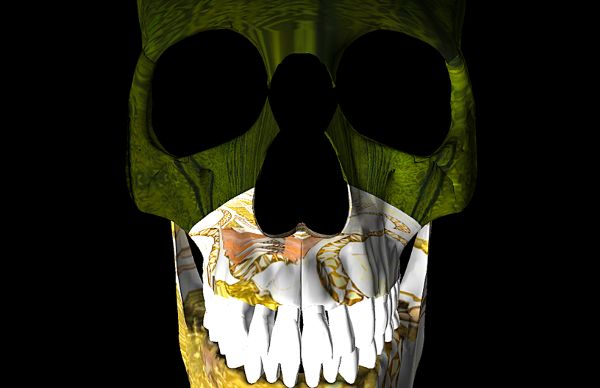Unable to play video.
Your browser is not able to play this video. You may download it and play it locally using the download button below.
“Metagame 2” in “Metagaming”
Metagame 2
Memento Mortem Mortis
Memento Mortem Mortis is an original piece of software that simulates the stretched skull from Hans Holbein’s The Ambassadors (1533). Whereas Robert Lazzarini’s skulls (2001) features a variety of non-perspectival topological transformations applied to 3D geometry, Memento Mortem Mortis conflates the displaced picture plane from traditional anamorphic projection with the polygonal planes of a human skull through a graphic technique called texture mapping (see Figure 2.13). Although the anamorphic effects of puzzle games like Portal (2007), Echochrome (2008), levelHead (2008), and Miegakure (forthcoming) often revolve around a predetermined solution, in Memento Mortem Mortis each skull simply reveals a new level of anamorphic distortion. From a randomly generated maze to the multiple levels of digital distortion, the puzzle may have a solution, but it is not for us. It is picture planes all the way down. To download Memento Mortem Mortis, go to http://manifold.umn.edu/memento.


Figure 2.13. Memento Mortem Mortis is an original metagame by Patrick LeMieux and Stephanie Boluk that uses texture mapping to anamorphically smear an Ambassadors-themed maze across the surface of a human skull.
We use cookies to analyze our traffic. Please decide if you are willing to accept cookies from our website. You can change this setting anytime in Privacy Settings.